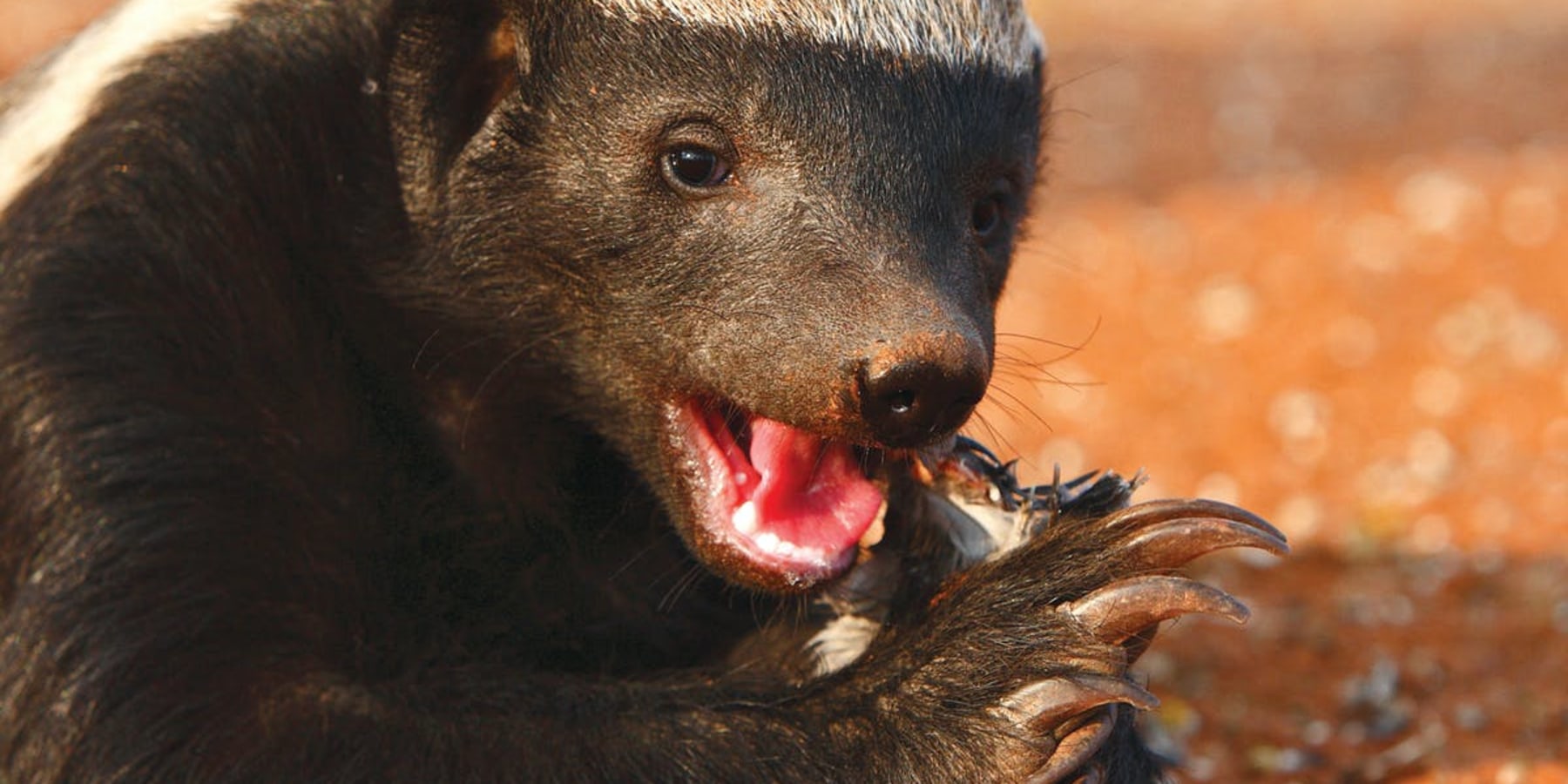
The honey badger (Mellivora capensis), also known as the ratel, is a mammal widely distributed in Africa, Southwest Asia, and the Indian subcontinent. It is the only species in the genus Mellivora and the mustelid subfamily Mellivorinae. Despite its name, the honey badger does not closely resemble other badger species; instead, it bears more anatomical similarities to weasels. It is primarily a carnivorous species and has few natural predators because of its thick skin, strength and ferocious defensive abilities.
Honey badgers, or ratels, are pretty hard-core animals. They have thick skin, and they are three and a half feet long at their largest. They are also astonishingly adept at defending themselves. Honey badgers are what is known as generalist carnivores.
That means they’ll eat just about any meat they can get their paws on. They’ll eat insects, rodents, small lizards, and birds, certainly. But they’ve also been known to take down crocodiles and pythons. And if you aren’t impressed, you may be surprised to learn they’ve even been known to eat highly venomous snakes like cobras and black mambas, as well.
They are active throughout the day, though near human settlements, they may prefer the cover of darkness. They are often seen alone, though it’s not uncommon to spot mating pairs. Honey badgers mate all year and usually have just one cub at a time. Some say honey badgers don’t care, but that reputation is hardly fair. These medium-sized members of the weasel family have super-sized attitudes.
Honey badgers are very good at turning rock crevices and hollowed trees into shelters. They will also make homes in the abandoned dens of other animals. The honey badger is mostly solitary but has also been sighted in Africa to hunt in pairs during the breeding season.
It also uses old burrows of aardvark, warthog and termite mounds.[31] It is a skilled digger, able to dig tunnels into the hard ground in 10 minutes. These burrows usually have only one entry, are usually only 1–3 m (3.3–9.8 ft) long, with a nesting chamber that is not lined with any bedding.
The honey badger is notorious for its strength, ferocity and toughness. It is known to savagely and fearlessly attack almost any other species when escape is impossible, reportedly even repelling much larger predators such as lions and hyenas. Bee stings, porcupine quills, and animal bites rarely penetrate their skin.
Honey badgers are very good at digging, have an excellent sense of smell, are great at climbing, and are capable of covering more than 24 miles in a single 24 hour period. Their prominent, sharp teeth, long foreclaws, and stocky build allow them to easily rip meat from the bone. Though they hunt for their food most of the time, they’ll happily steal from other carnivores or scavenge the kills of bigger animals when the opportunity arises.
Females are smaller than males. In Africa, males weigh 9 to 16 kg while females weigh 5 to 10 kg on average. The mean weight of adult honey badgers from different areas has been reported at anywhere between 6.4 to 12 kg, with a median of roughly 9 kg per various studies. The honey badger possesses an anal pouch which, unusual among mustelids, is eversible, a trait shared with hyenas and mongooses. The smell of the pouch is reportedly “suffocating” and may assist in calming bees when raiding beehives.
Though honey badgers are widespread and considered abundant, they are hunted or persecuted in certain regions, especially when they conflict with farmers and beekeepers. They’re also harvested for the traditional medicine trade; a reputation for bravery and tenacity make honey badgers popular for traditional medicine.
Preventing the loss of honey badgers from those areas requires vigilance from local populations.










